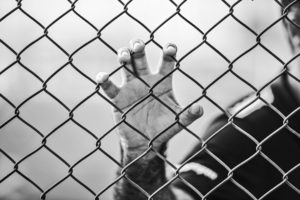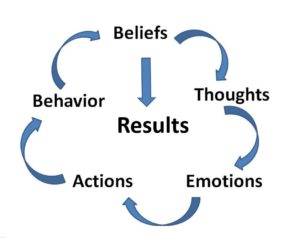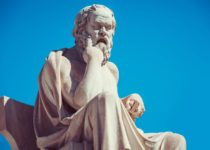What Holds You Back From Doing What You Love: Part of Chapter I of the upcoming book ”Find Your Passion”

What Holds You Back From Doing What You Love: Part of Chapter I of the upcoming book ”Find Your Passion”
”The worst enemy you can meet will always be yourself.”
– Friedrich Nietzsche –
Before applying any strategy and tools for you to get the clarity and focus you want in your career and life, you need to overcome your ego and fears. This is the first and most important strategy for you to both discover and pursue your passion. Your passion journey does not start with your passion discovery. That’s right. It starts much earlier, and more precisely with your mindset. Your mindset is your mentality, the way you think of and see the world around you.
What has been stopping you so far from having the life you truly want? Your bad luck? Your circumstances? The economy and politicians of your country? The universe? God? Your karma? Your family, friends, partner, boss, or society in general? The answer is only 3 words: NO. YOU ARE. You and only you are the master and designer of your life.
So, what about all the above? They are elegantly and intelligently articulated well convincing stories we come up with. Sophisticated excuses we find, repeat and feed ourselves with, day-in-day-out. Remember: You can’t change everyone and everything around you, but you can change yourself.
”When you change,
everything changes.”
– Jim Rohn –
And when you change, you change your mindset. The last one is your belief system. It consists of the core personal beliefs of yours. Beliefs about others and beliefs about yourself. Your beliefs are your personal principles, guidelines, your ”code” and ”blueprint” of specific information. This info is stored in your subconscious mind and your long-term memory. Your subconscious mind controls approximately 97% of your daily brain activities. Why? Because one of the core functions of our brain is to do as many things as possible with as little energy as possible. That means, whenever there’s a chance for your brain to save energy, it will do it. These are any actions you do automatically, without conscious thinking (e.g. driving, walking, brushing your teeth, going to the bathroom, sitting, following the same recipe in cooking, etc). It basically dominates your life.
Why is this important? Because your core beliefs are deeply rooted in your subconscious mind. In other words, you’re not conscious of them when you express them; and you manifest them through your thoughts, actions and behavior. Here’s how it works: Your beliefs influence and determine your thoughts; your thoughts determine your emotions; your emotions determine your actions; and your actions determine your behavior by repetition. Here’s how this sequence looks like:

So, your mindset, your unique lens through which you see, perceive, interpret and interact with the world, both your inner and external, consists of your core beliefs, your belief system. ”And what fears have to do with mindset and my belief system?”, you might wonder. Everything! Most of your fears and inner challenges – if not all – derive from negative limiting beliefs of yours, deeply saved in your subconscious mind, which is in charge of your mindset.
Beliefs for yourself
Your negative beliefs about yourself are usually expressed through at least one little voice and thought in your head which sounds like this: ”I/You cannot do this. What if you fail? What if you get rejected? You’ll suck then. What others will think of you? I’m not smart, capable/talented/attractive/ tall/educated/funny/ experienced enough for this/them. ”, and so on. These are the voices of self-doubt, your ego and fear; any fear you can or cannot imagine. Now, do pay attention to this: These voices are NOT YOU. By you, I mean your true, infinite potential; your very personality; the core of your ”being”. Your potential and your core personality are yourself at a very early age, until 7 years old. During these first years of your life, your personality as an individual has already been molded.
”Give me a child until he is 7
and I will show you the man.”
– Aristotle –
But as we grow older, we start expressing less and less our core identity and true self. We start developing inner restrictions. Limiting beliefs that are not a part of our personality by birth, but they have been cultivated to us over the years by the ”dos and don’ts”, the ”shoulds and shouldn’ts” the ”musts and mustn’ts”, the ”oughts and ought nots”. But who taught them to us? Anyone who plays a direct or indirect role to our education, including our family, peers, partners, teachers, and our social milieu in general. All of these ”nots” are manifested through the negative thoughts and voices we mentioned before, or similar ones.
Beliefs for others (Unconscious biases and stereotypes)
In terms of your beliefs about others and the world around you, a typical example is a stereotype, or a bias, such as the belief that ”Women should not work but focus on the upbringing of their children, as well as the household chores”; or that ” women naturally perform at non-technical/scientific professions, such as teacher and nurse, and they’re not good enough as men at engineering, medical, biology, chemistry and tech occupations, whereas in reality, they have outperformed men in many scientific fields. Besides gender, biases can also be related to race, ethnicity, age, sexual orientation, religious and political beliefs, etc. What’s even worse is that not only do they apply to others but to yourself. Put it simply, if you are biased against the women’s potential in science, not only will you act against them and their potential, but, if you’re a woman, you’ll constantly undervalue yourself!
All the above limiting beliefs are just a few examples. We’ll go through all of them later on.
”Ok. But what about my culture as well as all the people and experiences that had an impact on me? Aren’t these things part of my true self?” Absolutely. In fact, your core personality is shaped by your culture and any stimuli you receive from the world around you; and they’ll keep shaping you as you grow older, although to a smaller degree. Nevertheless, not all the beliefs you developed so far are in favor of you. In fact, many of them are quite harmful and dangerous for your personal growth, happiness and passion journey. These ones are the ones which we’ll be dealing with in this book. Your natural brilliance and potential are already in you. It’s the little child of yours within. Yes, it’s there, in you; and we’ll bring him/her onboard soon!
The real impact of our limiting beliefs
Now, let’s have a look at a few examples regarding the impact of our limiting beliefs in our behavior and personal development, shall we?
”The monkeys’ experiment”
An experiment and study conducted by Gordon R. Stephenson on the ”Cultural Acquisition of a Specific Learned Response Among Rhesus Monkeys” * demonstrated the social impact on our behavior. Stephenson assigned the monkeys in unisexual pairs. Each monkey was observed in a cage both alone with an object and with its partner in 45 control sessions of 15 minutes. One monkey of every pair, while alone in the cage, was punished with an air blast every time it tried to manipulate the object until it stops trying. Then, he observed the behavior of the punished monkey, alone and with its unpunished partner. Finally, he observed the unpunished partner while alone and with its partner. He concluded in the following:
”All subjects (monkeys) appeared to have been successfully conditioned to avoid the reinforced object during their first session as a demonstrator (punished monkey) in the critical test; no air blasts were required to prevent manipulation by the demonstrator in the second session while it was alone with the object”.
The study concluded that ”In six of eight critical test sequences with pairs of socially normal lab-reared rhesus monkeys, the behavior of one subject toward the object altered, with lasting consequences, the independent behavior of a second subject toward the same object”.
Besides the current study, Stephenson in the same article refers to a few more relevant cases worth mentioning here as well:
”Kawamura and later Kawai, in their discussion of field studies of Japanese macaques (genus of monkeys), described behaviors who were peculiar to certain troops of these monkeys. Food habits, usually learned by infants from their mothers, were found to be specific for each troop. For example, in 1956, females and juveniles of the provisioned Koshima troop exhibited Sweet Potato Washing Behavior, (whatever that means) while peripheral adolescent males did not. Kawai suggests that reduced social interaction between these parts of the troop makes it unlikely these peripheral males will acquire Washing Behavior. Itani has referred to the above behaviors as culture.
Washburn and Hamburg describe an incident that had profound and long-term effects upon the subsequent behavior of a baboon group. Prior to the shooting of two members, the group could easily be approached in a car. The authors comment, ”it is very unlikely all the animals in the group saw the shooting…” but eight months later this group ”…still could not be approached, even though the animals must have seen cars almost daily in the interval”. The experience of some of the animals had apparently become part of the whole group’s behavior, an event suggestive of cultural transmission. ”
Last but not least, he mentions a third interesting case:
”Joslin, Fletcher and Emlen examined the reactions of rhesus monkeys to snakes. They found that wild-reared animals would not reach toward a live snake or snake-like model to retrieve a food reward, while lab-reared animals, in the same situation, showed little hesitancy in reaching for the reward. In explanation, they proposed that, in the wild, young rhesus monkeys learn to fear snakes from the reactions of older members of the troop to which they belong; lab-reared monkeys, never exposed to snakes or to adult reactions toward snakes, do not acquire the response (fear). In this view, the transfer of information underlying responses of the wild-reared monkeys could be regarded as cultural in the sense of Itani.
I regard culture as the constellation of behaviors characteristic of a single social group, behaviors which are transgenerational and socially learned by individuals as members of the group”.
What is also both interesting and ironic here is that none of the monkeys knew why they were doing what they were doing, the source of their behavioral change. Nonetheless, they were still trying, one way or another, to prevent other monkeys to behave in a way that leads to the punishment of the first ones. This is the power of social impact.
But why do we and the monkeys, and the animals in general, react with fear, whether the threat is real and severe or trivial and imaginary? For our survival. This is our brain’s survival mechanisms, controlled by our subconscious mind (which dominates 95% of our behavior, remember?) And this was absolutely necessary for our ancestors for us to survive and thrive as species (e.g. being able to write books about passion!). Nevertheless, we don’t live in the jungle any more (at least the most of us, and by ”jungle” I mean literally jungle). In other words, our biggest fears are not actually life-threatening, but our mind perceives them as such – whether is getting fired, losing your home or getting a divorce, or getting rejected by the person you’re in love with.
How conscious are you really about your daily actions and behavior? What were your ”punishments” that taught you to stop trying out things and adopting behaviors that were actually beneficial for you and your growth?
”The elephant lesson”
What an elephant can teach you?
Well, many things in fact but we’ll focus on its training. Elephants are 100 times our weight and size. So, how does an elephant owner keep it under control?
Have you ever seen an elephant tied to a tree with a rope? If yes, you’d have noticed that the trunk of the tree is not thick enough to actually prevent the elephant from breaking free, given its tremendous natural power. But it didn’t have such power when it was a baby! Then, it was constantly trying to break it without success. As a result, it was trained and learned that the space available to move was, is, and will be the last point that the rope could extend. This point is its limits. This point is our own personal limits.
You might be wondering right now ”Is this really true? And if so, will it always be like this? Is it a one-way ticket to helplessness with no return? Is it a dead-end? The end of my personal growth and passion? A conviction to a miserable and full of restrictions life? A life of scarcity?
Am feeling blessed and rather privileged to announce to you ”NO! Hell no!”. You can change it. You can change the course of your life. Absolutely yes. And we’ll do this together in this book.
For the moment, let’s have a look at how Nietzsche’s quote ends, shall we?
”You lie in wait for yourself in caverns and forests. Lonely one, you are going the way to yourself! And your way goes past yourself, and past your seven devils! You will be a heretic to yourself and witch and soothsayer and fool and doubter and unholy one and villain. You must be ready to burn yourself in your own flame: how could you become new, if you had not first become ashes?”
* See Gordon R. Stephenson on the ”Cultural Acquisition of a Specific Learned Response Among Rhesus Monkeys”, published in ”Progress in Primatology” in 1967 http://www.throwcase.com/wp-content/uploads/2015/08/Cultural-Acquisition-of-Specific-Learned-Response_Stephenson_1966.pdf
Feel free to connect with me on social media by visiting my personal site JimPanos360.com


